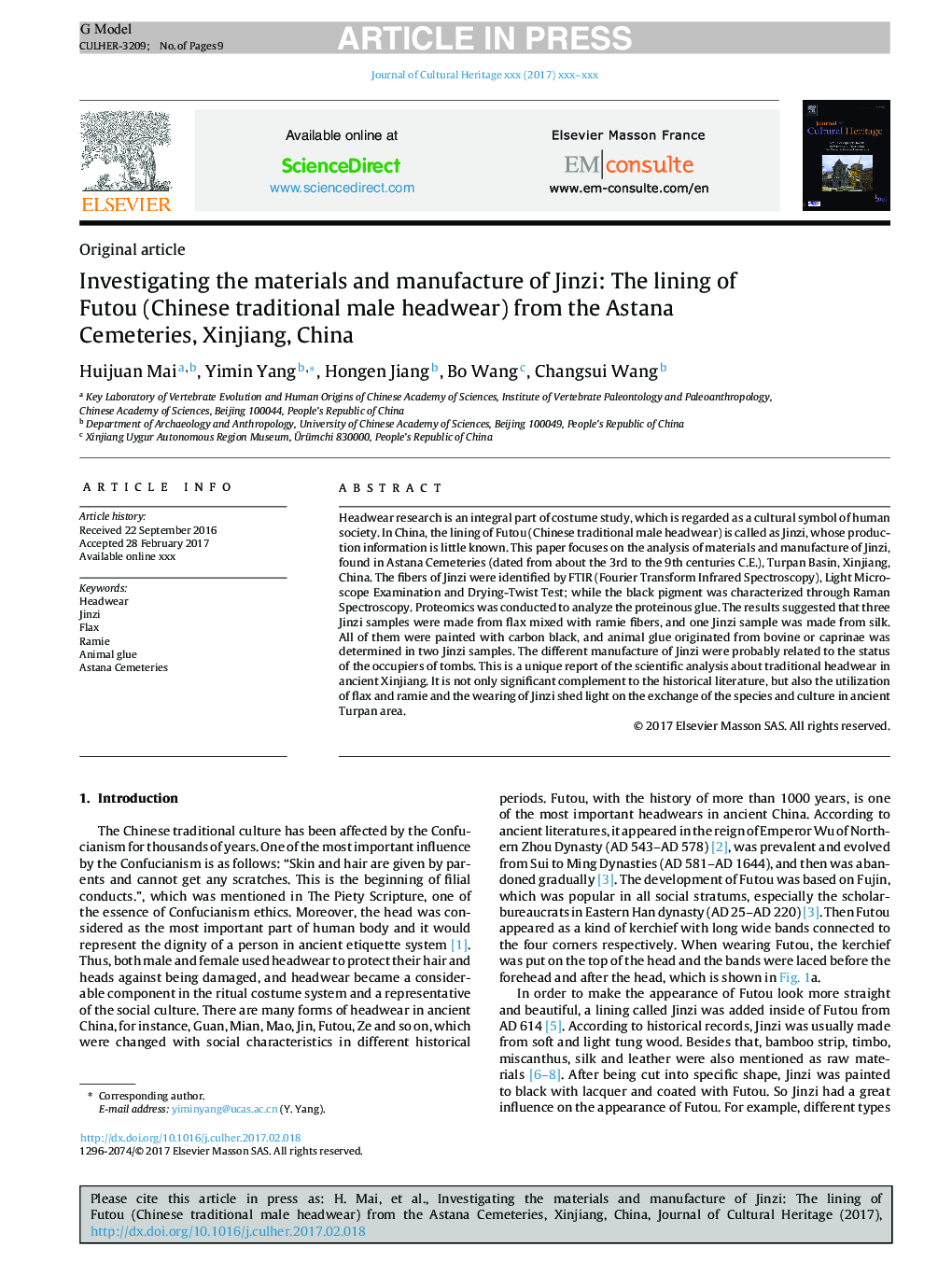| Article ID | Journal | Published Year | Pages | File Type |
|---|---|---|---|---|
| 5112625 | Journal of Cultural Heritage | 2017 | 9 Pages |
Abstract
Headwear research is an integral part of costume study, which is regarded as a cultural symbol of human society. In China, the lining of Futou (Chinese traditional male headwear) is called as Jinzi, whose production information is little known. This paper focuses on the analysis of materials and manufacture of Jinzi, found in Astana Cemeteries (dated from about the 3rd to the 9th centuries C.E.), Turpan Basin, Xinjiang, China. The fibers of Jinzi were identified by FTIR (Fourier Transform Infrared Spectroscopy), Light Microscope Examination and Drying-Twist Test; while the black pigment was characterized through Raman Spectroscopy. Proteomics was conducted to analyze the proteinous glue. The results suggested that three Jinzi samples were made from flax mixed with ramie fibers, and one Jinzi sample was made from silk. All of them were painted with carbon black, and animal glue originated from bovine or caprinae was determined in two Jinzi samples. The different manufacture of Jinzi were probably related to the status of the occupiers of tombs. This is a unique report of the scientific analysis about traditional headwear in ancient Xinjiang. It is not only significant complement to the historical literature, but also the utilization of flax and ramie and the wearing of Jinzi shed light on the exchange of the species and culture in ancient Turpan area.
Keywords
Related Topics
Physical Sciences and Engineering
Chemistry
Physical and Theoretical Chemistry
Authors
Huijuan Mai, Yimin Yang, Hongen Jiang, Bo Wang, Changsui Wang,
